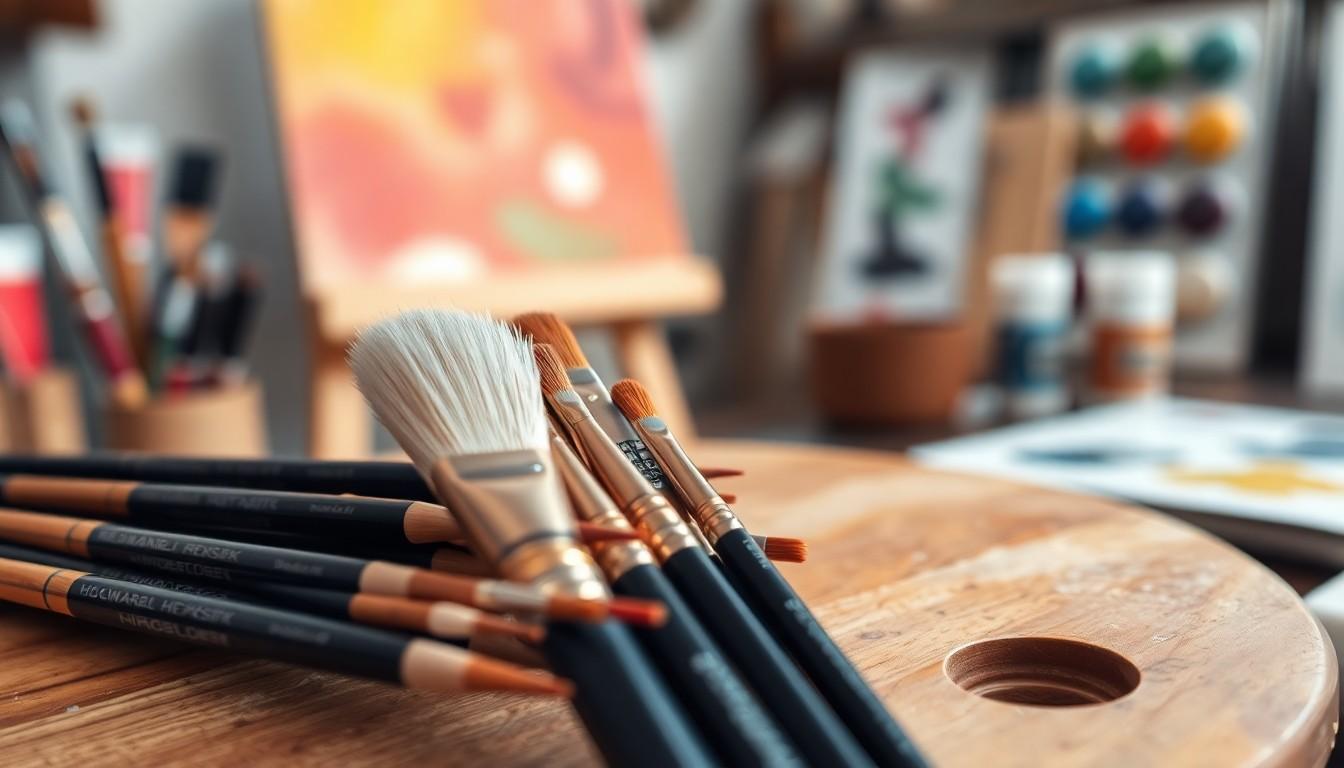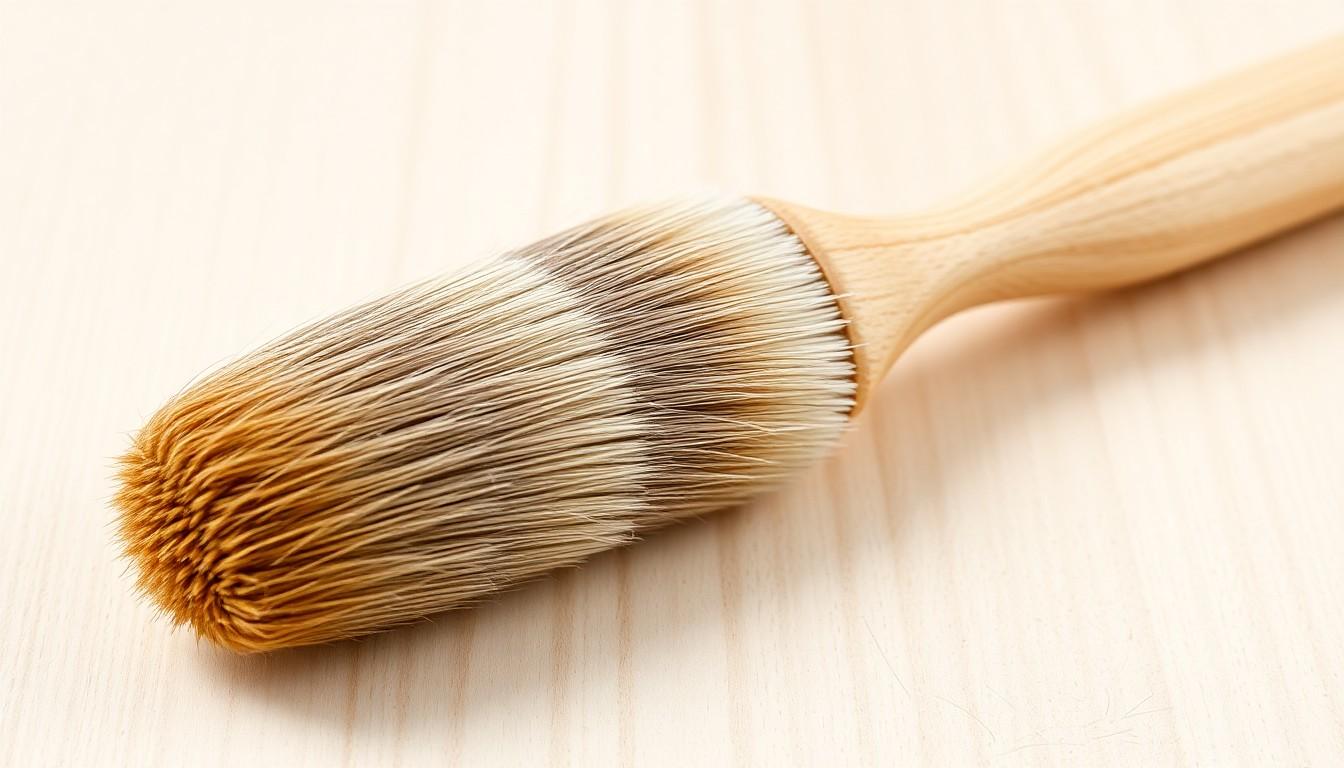
How Does Higossis Brush Made? Discover the Artistry Behind Its Craftsmanship
Ever wondered how that magical Higossis brush comes to life? It’s not just a brush; it’s a tiny masterpiece crafted with precision and flair. From the selection of the finest materials to the meticulous assembly, each step in the creation process is like a well-choreographed dance—minus the tutus.
Overview of Higossis Brushes
Higossis brushes represent a commitment to craftsmanship and quality. Each brush begins with the careful selection of premium materials, ensuring durability and performance. Natural bristles from various sources, such as Siberian sable or Chinese weasel, contribute to their luxurious feel and impressive performance.
Manufacturing takes place in facilities that emphasize precision and attention to detail. Artisans employ advanced techniques to shape each bristle, resulting in optimal functionality for artists and makeup professionals alike. Each brush undergoes rigorous quality checks to maintain high standards.
The assembly of Higossis brushes involves a meticulous process. First, individual bristles are arranged according to specific designs to create unique shapes. After that, they are securely attached to hand-carved wooden handles. Surfaces are polished for comfort, and finishes are applied to enhance aesthetics.
Unique features distinguish Higossis brushes from competitors. For instance, ergonomic handles provide a comfortable grip, enhancing user experience during prolonged use. Brush sizes, ranging from small detailers to large powder brushes, cater to various techniques and styles.
Sustainability is also an important consideration in production. The brand prioritizes environmentally friendly practices, sourcing materials from sustainable suppliers. This approach aligns with growing consumer demand for ethically made products in today’s market.
Customers appreciate Higossis brushes for their reliability and performance. Users report improved application and blending, making these brushes popular among professionals and enthusiasts. The combination of high-quality materials and expert craftsmanship reinforces the brand’s reputation in the beauty industry.
Materials Used in Higossis Brushes


Higossis brushes rely on a combination of high-quality materials designed to enhance performance and user experience. These materials include natural and synthetic fibers, each contributing unique benefits.
Natural Fibers
Natural fibers like Siberian sable and Chinese weasel form the core of Higossis brushes. These fibers provide a luxurious texture that promotes flawless application. Sable fibers offer exceptional softness and flexibility, allowing for seamless blending. Weasel fibers add durability, making brushes resilient over time. Artisans carefully select these materials from trusted suppliers, ensuring sustainability in sourcing. Users often notice the superior quality as these bristles hold pigments well, delivering excellent color payoff and control during application.
Synthetic Fibers
Synthetic fibers play a significant role in Higossis brush design. Made from high-quality nylon and polyester, these fibers mimic the performance of natural counterparts. Many synthetic fibers feature advanced technology that enhances their ability to retain shape and withstand wear. Artists benefit from consistent application due to the durability and resilience of these materials. Additionally, synthetic brushes are often more accessible for those with ethical concerns regarding animal products. Higossis prioritizes innovation, ensuring synthetic options maintain high standards of quality and functionality.
The Manufacturing Process
The manufacturing process of Higossis brushes involves several precise steps to achieve exceptional quality and performance.
Step 1: Fiber Selection
Selection of fibers plays a critical role in brush performance. Natural bristles from Siberian sable and Chinese weasel provide unmatched softness and flexibility. These materials offer excellent durability while ensuring ethical sourcing. Synthetic fibers made from high-quality nylon and polyester also factor into production, mimicking natural fibers effectively. Users appreciate these synthetic alternatives for their longevity and shape retention. Each choice ensures optimal pigment loading and color payoff for artists and makeup professionals alike.
Step 2: Handle Production
Handles receive equal attention during production. Craftsmen shape each handle from premium wood, ensuring ergonomic design for comfort during use. Hand-carving techniques enhance each piece’s unique feel, emphasizing the brand’s commitment to craftsmanship. Artisans finish handles with a fine polish, elevating the user experience. Sustainability remains a priority, with responsibly sourced wood materials aligning with consumer values. Attention to detail during handle production supports the overall performance of Higossis brushes.
Step 3: Assembly of the Brush
Assembly combines all elements into a cohesive tool. Artisans expertly arrange selected bristles into unique shapes tailored for different applications. Secure attachment to the hand-carved handles ensures durability and reliability. Final polishing of both bristle tips and wooden surfaces enhances the brush’s usability. Unique features are incorporated to meet various user preferences, such as size variations and ergonomic considerations. Each brush emerges as a meticulously crafted tool ready for performance, reflecting the brand’s dedication to quality and functionality.
Quality Control Measures
Quality control in the production of Higossis brushes involves several critical steps that ensure each product meets high standards. Artisans conduct rigorous inspections at various stages of manufacturing, focusing on the quality of materials and craftsmanship. Consistency in bristle length and shape is essential for optimal performance, so experts meticulously verify these attributes before assembly.
Testing for durability occurs before brushes leave the production facility. Each brush undergoes functionality tests to ensure bristles maintain their form and flexibility after repeated use. Feedback from professional artists and makeup users informs adjustments, confirming that products align with industry expectations.
The brand implements a final inspection to assess overall aesthetics and craftsmanship. Each handle receives scrutiny for ergonomic design, ensuring comfort during use. Additionally, a team evaluates the overall finish for smooth surfaces, positively impacting user experience.
Sustainability also plays a key role in quality control. Sourcing materials from environmentally friendly suppliers ensures not only durability but also ethical manufacturing practices. The brand effectively balances quality with sustainability, enhancing its reputation in the beauty industry.
Regular audits of manufacturing facilities maintain adherence to these quality standards. Training programs for artisans reinforce best practices, promoting a culture of excellence in every brush created. Overall, the quality control measures in place reflect Higossis’s commitment to delivering reliable tools that enhance performance in the hands of artists and makeup professionals.
Conclusion
Higossis brushes stand as a testament to the art of craftsmanship and quality in the beauty industry. With a focus on premium materials and innovative manufacturing techniques, these brushes provide artists and makeup professionals with reliable tools for their craft. The attention to detail in every step of production—from fiber selection to ergonomic handle design—ensures optimal performance and user satisfaction. By prioritizing sustainability and ethical sourcing, Higossis aligns with modern consumer values, making their brushes not just tools but a commitment to responsible beauty. As users continue to experience the enhanced application and blending capabilities, Higossis maintains its esteemed reputation within the beauty community.



